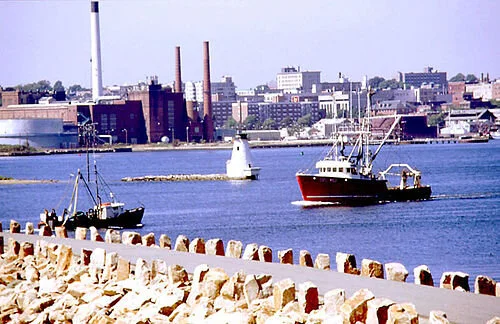Dissolving scallops
An Atlantic Bay scallop, photographed at the Marine Biological Laboratory, in Woods Hole, Mass.
— Photo by Rachael Norris and Marina Freudzon
From Robert Whitcomb’s “Digital Diary,’’ in GoLocal124.com
Ocean acidification caused by the man-made increase in atmospheric carbon dioxide may well mean that many more scallops than now will not make it beyond the larval stage, or if they do they’ll be small because the acidity dissolves shells. The fishing port of New Bedford hauls in hundreds of millions of dollars worth of scallops a year. Maybe its fishermen will become another source of lobbyists against American myopia about global warming.
To read more, please hit this link.
New Bedford Harbor: In the 19th Century New Bedford’s big “fishing’’ industry was whaling (though of course whales aren’t fish). Now the port’s biggest crop is scallops, most taken from Georges Bank.


